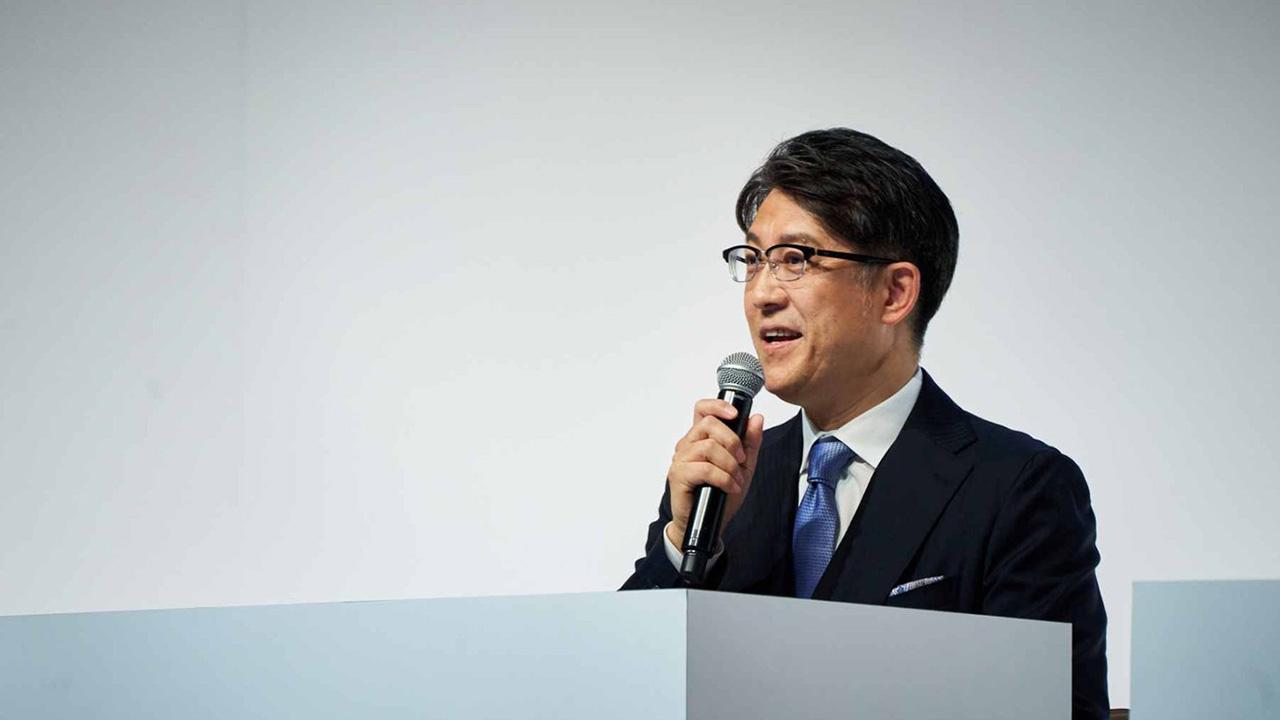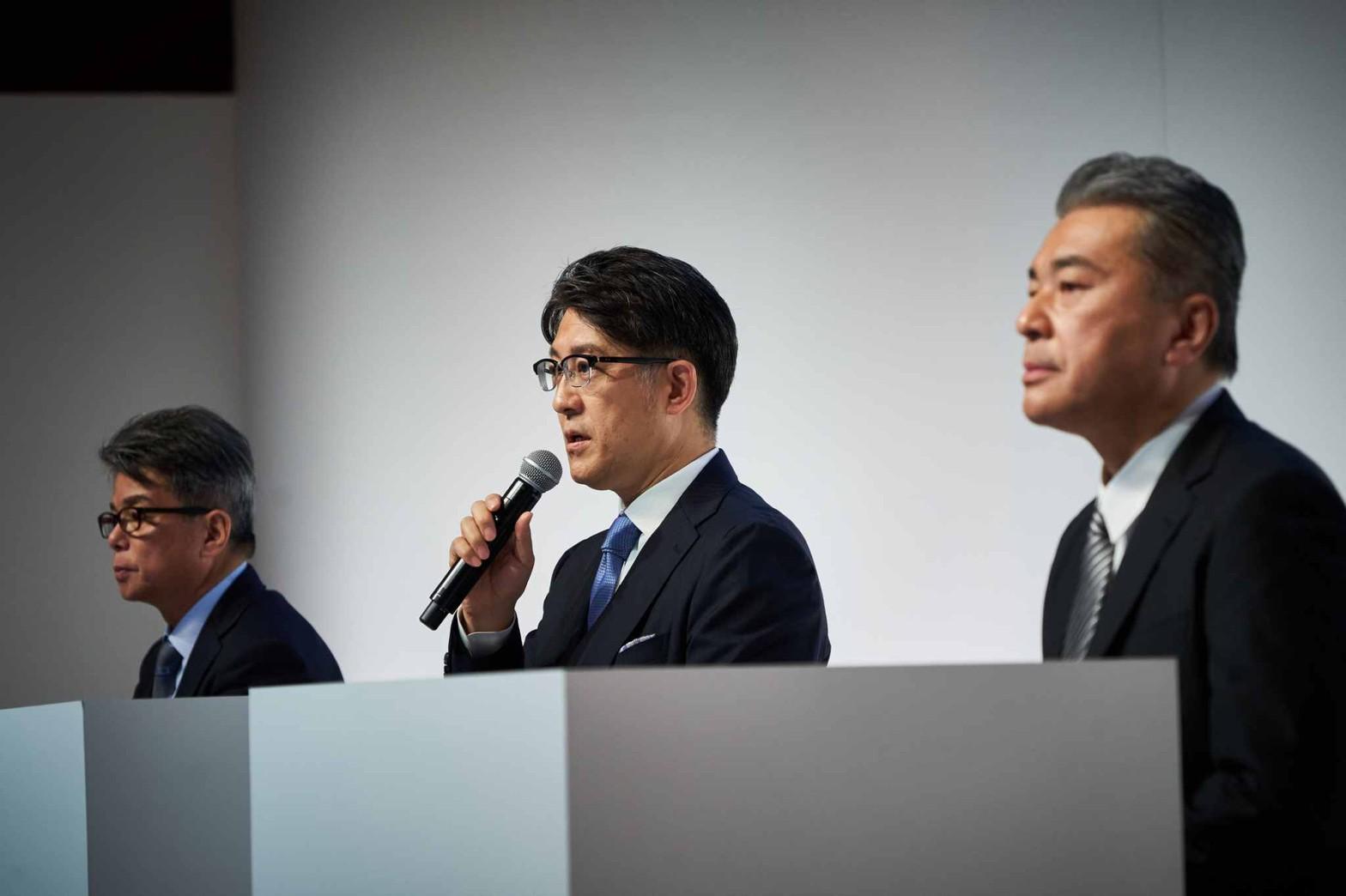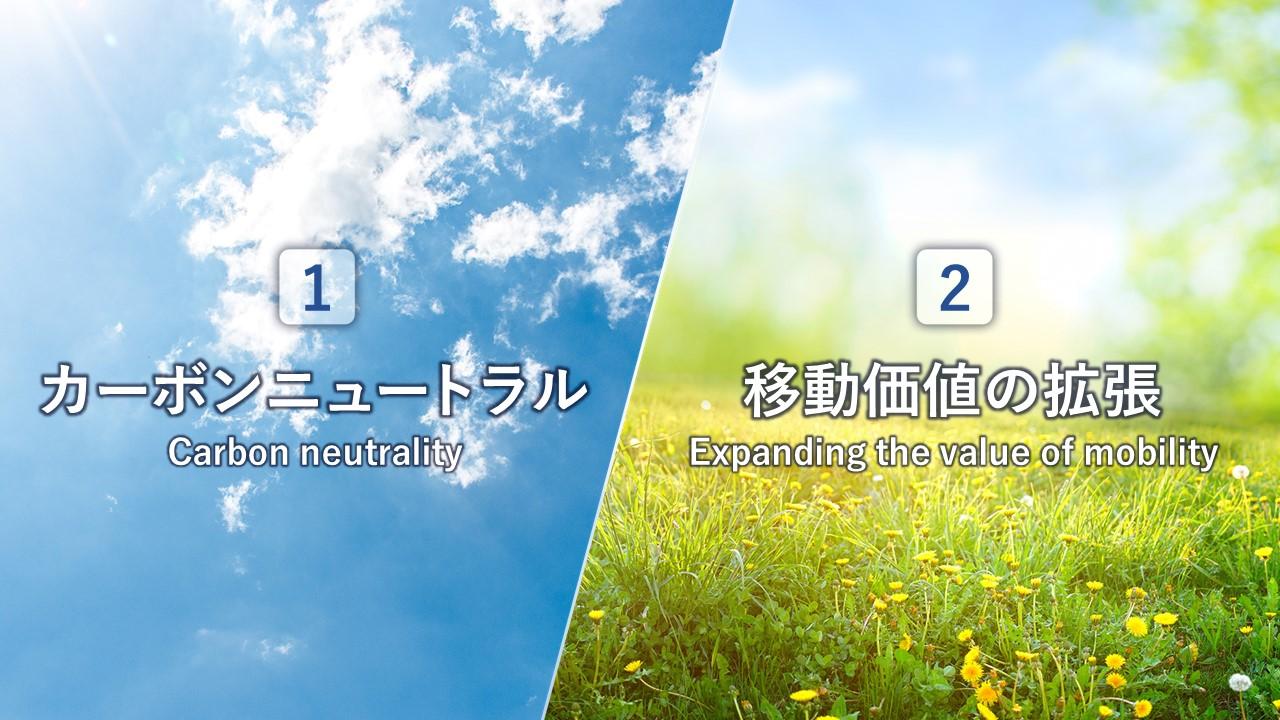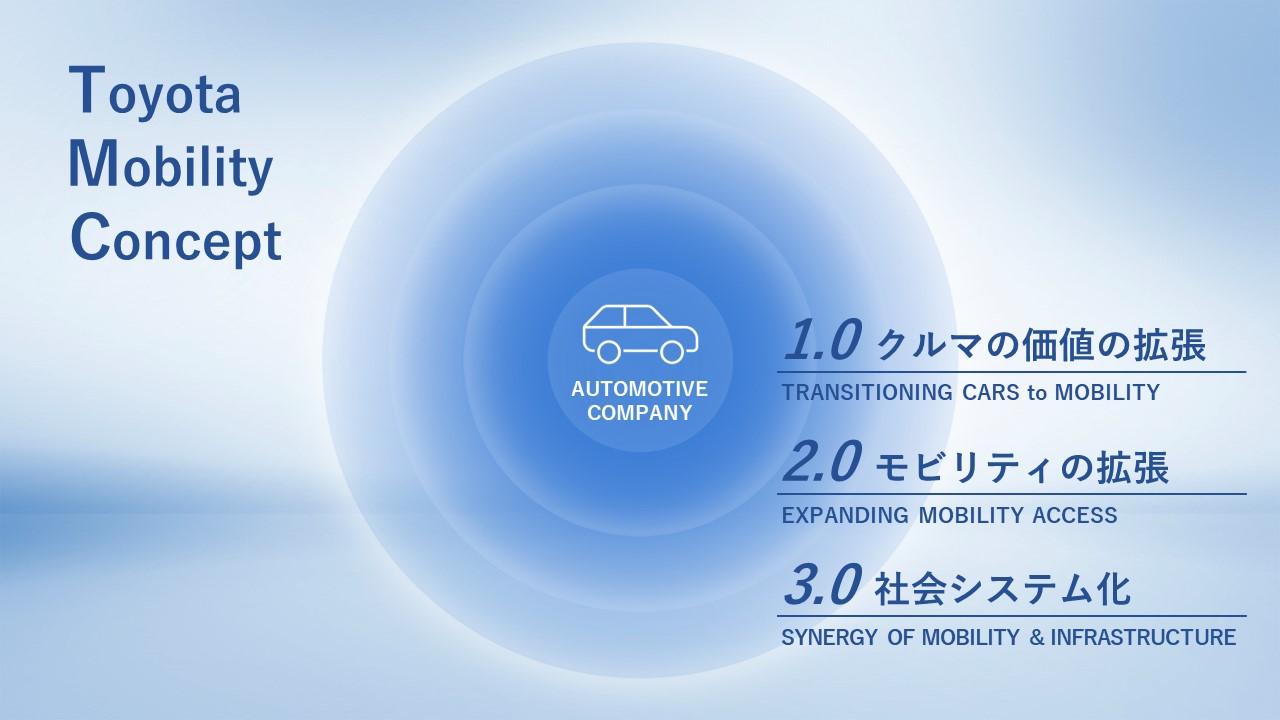
The questions and answer session at a recent conference dug deeper into two ideas expressed by the new management team: "carbon neutrality" and "expanding the value of mobility."

"What I want to express most is our powerful resolve to change the future of cars."
This was President Koji Sato’s emphatic answer when a reporter asked what message he wanted to convey at the April 7 press briefing on the company's new management.

In his presentation that day, President Sato explained two ideas central to the future change, carbon neutrality and expanding the value of mobility, while the two executive vice presidents Hiroki Nakajima and Yoichi Miyazaki took the stage to speak about product-centered and region-centered management, respectively.
Together, they revealed a roadmap for Toyota under its new management.

Here, Toyota Times presents questions from the press and answers from the team for each of those two topics. Let us dig deeper into the policies this new management team offers up.
Presentation Summary
President Sato stated clearly at the press conference, "We have to change the future of cars to ensure that they remain a necessity for society," while two key concepts at the heart of that change are "carbon neutrality" and "expanding the value of mobility." Here are the general points covered in his speech:
① Carbon neutrality - Pursuing diverse options through a multi-pathway approach
・Hybrid Electrics (HEVs)
└Enhancing sales, including in emerging markets
・Plug-in hybrid vehicles (PHEVs)
└Increase options while improving battery efficiency and increasing EV driving range past 200km.
・Electrified vehicles (EVs)
└Introducing 10 additional EV models by 2026. Hit sales of 1.5 million units a year.
└Reduce development and production processes to half
└New specialist unit with a leader holding full authority over development, production, and operations.
・Fuel cell electrified vehicles (FCEV)
└Mass-produce commercial FCEVs (starting with medium- and heavy-duty trucks)
・Hydrogen-powered engines
└Technological development using motorsports
└Fundamental studies for heavy-duty commercial vehicles started last year
・Carbon-neutral synthetic fuel
└Coordinate with the energy industry on technological development
└Reduce emissions of existing vehicles that are 20 times as many in numbers as new.
Using these ideas, the aim is to cut emissions from global cars sold by 33% in 2023, and over 50% in 2035 (compared to 2019 values).
②Expanding the value of mobility (Promoting electrification, intelligence-powered vehicles, and diversification, connecting cars to society)
・Intelligent vehicle
└Cars: In next-gen EVs, as car OS evolves, driving feel can be customized
└Services: Begin social implementation this year of energy grid systems for an improved EV charging network and logistics systems for improved transport efficiency
└Society: Improve on issues revealed by social implementation at Woven City, then retry
・Diversification
└Cars: Expand services and parts/accessories using connected technology
└Mobility: Develop and implement mechanisms for one-touch wheelchair fastening this year
└Energy: On the motorsports track, hone carbon-neutral synthetic fuels using hydrogen produced from water or waste, or using biomass
The Toyota Mobility Concept combines these two elements of carbon neutrality and expands the value of mobility into a vision of the mobility society that Toyota seeks to achieve.
The speakers then presented three fields where Toyota is working to promote its transformation into a mobility company: expanding the value of mobility, expanding mobility access, and synergizing mobility with infrastructure.

Click here for the full text of the New Management Structure Policy Briefing Speech

